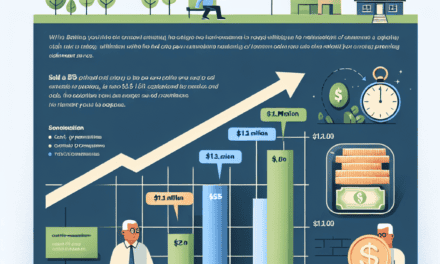“Unlocking Potential: Key Palantir Stock Levels to Watch Post-Earnings Surge”
Introduction
Following a robust earnings report, Palantir Technologies has captured the attention of investors, prompting a closer examination of its stock price movements. As the market digests the company’s financial performance, several key price levels have emerged as critical markers for traders and investors alike. These levels serve as potential indicators of future price action, offering insights into support and resistance zones that could influence Palantir’s stock trajectory. Monitoring these price levels can provide valuable guidance for those looking to capitalize on the stock’s post-earnings momentum or to manage risk in their investment strategies.
Analyzing Palantir’s Post-Earnings Stock Performance
Following Palantir Technologies’ recent earnings report, the company’s stock has experienced a notable surge, capturing the attention of investors and analysts alike. This post-earnings momentum has prompted a closer examination of key stock price levels that could play a significant role in shaping Palantir’s market trajectory in the coming months. Understanding these levels is crucial for investors seeking to navigate the complexities of the stock market and make informed decisions regarding their portfolios.
To begin with, it is essential to consider the immediate impact of the earnings report on Palantir’s stock price. The company’s financial performance exceeded market expectations, driven by robust revenue growth and improved profitability. This positive outcome has instilled confidence among investors, leading to a surge in buying activity and a subsequent increase in the stock price. As a result, the initial resistance level, which was previously a barrier to upward movement, has been breached, paving the way for further gains.
In light of this development, the next critical level to monitor is the stock’s recent high. This level serves as a psychological benchmark for investors, as surpassing it could signal continued bullish sentiment and attract additional buying interest. If Palantir’s stock manages to break through this high, it may indicate a sustained upward trend, encouraging investors to maintain or increase their positions. Conversely, failure to surpass this level could result in a period of consolidation or even a potential pullback, as investors reassess their strategies.
Moreover, it is important to consider the role of support levels in Palantir’s stock performance. Support levels are price points where buying interest tends to emerge, preventing the stock from declining further. In the context of Palantir, identifying these levels can provide valuable insights into potential entry points for investors looking to capitalize on any temporary dips in the stock price. Should the stock experience a pullback, observing how it interacts with established support levels can offer clues about the strength of underlying demand and the likelihood of a rebound.
In addition to technical analysis, broader market trends and external factors should also be taken into account when evaluating Palantir’s stock price levels. For instance, macroeconomic conditions, industry developments, and geopolitical events can all influence investor sentiment and, consequently, the stock’s performance. By staying informed about these factors, investors can better anticipate potential shifts in market dynamics and adjust their strategies accordingly.
Furthermore, it is worth noting that Palantir’s stock performance is not solely determined by its financial results. The company’s strategic initiatives, such as expanding its customer base, enhancing its product offerings, and forging strategic partnerships, also play a crucial role in shaping investor perceptions and expectations. As such, keeping an eye on Palantir’s business developments can provide additional context for understanding its stock price movements.
In conclusion, monitoring key stock price levels following Palantir’s earnings surge is essential for investors seeking to make informed decisions. By considering resistance and support levels, as well as broader market trends and company-specific factors, investors can gain a comprehensive understanding of the stock’s potential trajectory. This holistic approach not only aids in identifying potential opportunities but also helps mitigate risks, ultimately contributing to more effective investment strategies in the ever-evolving stock market landscape.
Key Resistance Levels for Palantir Stock
Following a notable surge in Palantir’s stock price post-earnings, investors are keenly observing key resistance levels that could influence future trading dynamics. The recent earnings report, which exceeded market expectations, has injected a fresh wave of optimism among shareholders and market analysts alike. However, as with any stock experiencing a rapid ascent, it is crucial to identify potential resistance levels that could either halt or propel further upward momentum.
Initially, the stock’s immediate resistance level is often determined by its recent high. In Palantir’s case, this level is closely aligned with the peak reached shortly after the earnings announcement. This point is significant because it represents the price at which sellers previously emerged, indicating a potential barrier to further gains. If Palantir’s stock can decisively break through this level with strong volume, it may signal a continuation of the bullish trend, encouraging more investors to enter the market.
Beyond the immediate resistance, historical price data provides additional insights into potential barriers. For instance, examining the stock’s performance over the past year reveals several key levels where the price has previously struggled to advance. These historical resistance points often coincide with psychological price levels, such as round numbers, which can influence investor behavior. As Palantir approaches these levels, traders will be watching closely for signs of either a breakout or a reversal.
Moreover, technical indicators play a crucial role in identifying resistance levels. Moving averages, particularly the 50-day and 200-day moving averages, are widely regarded as significant indicators of resistance. When the stock price approaches these moving averages from below, they can act as formidable barriers. Conversely, if the price breaks above these averages, they may transform into support levels, providing a foundation for further gains. In Palantir’s case, the interaction with these moving averages will be a critical factor to monitor in the coming weeks.
In addition to technical analysis, market sentiment and external factors can also impact resistance levels. For instance, broader market trends, economic indicators, and geopolitical events can all influence investor confidence and, consequently, stock prices. In the context of Palantir, any news related to its government contracts, technological advancements, or competitive positioning could either bolster or undermine its stock price. Therefore, investors should remain vigilant and consider these external factors when assessing potential resistance levels.
Furthermore, options market activity can provide additional clues about resistance levels. High open interest in call options at certain strike prices may indicate that traders expect the stock to face resistance at those levels. Conversely, if there is significant open interest in put options, it may suggest that traders anticipate a decline. By analyzing options data, investors can gain a deeper understanding of market expectations and potential resistance points.
In conclusion, while Palantir’s recent earnings surge has generated considerable enthusiasm, it is essential for investors to remain cognizant of key resistance levels that could influence the stock’s trajectory. By examining recent highs, historical price data, technical indicators, market sentiment, and options activity, investors can develop a comprehensive understanding of potential barriers. As Palantir navigates these resistance levels, the stock’s performance will offer valuable insights into its future direction, providing both opportunities and challenges for investors.
Support Levels to Watch for Palantir Investors
Following a significant earnings surge, Palantir Technologies has captured the attention of investors, prompting a closer examination of its stock price levels. As the market digests the implications of the company’s recent financial performance, it becomes crucial for investors to identify key support levels that could influence future trading decisions. Understanding these levels can provide valuable insights into potential entry and exit points, thereby aiding in the optimization of investment strategies.
To begin with, it is essential to consider the broader market context in which Palantir operates. The company’s recent earnings report exceeded expectations, driven by robust demand for its data analytics platforms across various sectors. This positive momentum has been reflected in the stock’s upward trajectory, yet it is important to remain vigilant about potential fluctuations. In this regard, identifying support levels can serve as a safeguard against unexpected downturns, offering a cushion that may prevent significant losses.
One of the primary support levels to monitor is the 50-day moving average. This technical indicator is widely regarded as a benchmark for short-term price trends. If Palantir’s stock price remains above this level, it suggests that the current bullish sentiment may persist. Conversely, a dip below the 50-day moving average could signal a shift in market sentiment, warranting a reassessment of investment positions. Therefore, keeping an eye on this level can provide early warning signs of potential changes in the stock’s trajectory.
In addition to the 50-day moving average, the 200-day moving average is another critical support level that investors should consider. This longer-term indicator offers insights into the stock’s overall trend and can help distinguish between temporary fluctuations and more sustained movements. A breach of the 200-day moving average might indicate a more profound shift in investor sentiment, potentially prompting a reevaluation of Palantir’s long-term prospects. Thus, monitoring this level can help investors maintain a balanced perspective on the stock’s performance.
Furthermore, it is beneficial to examine historical price levels that have previously acted as support. These levels often represent areas where buying interest has been strong enough to halt or reverse downward trends. For Palantir, past support levels around $20 and $25 have been significant in shaping the stock’s price action. Observing how the stock behaves around these levels in the wake of the earnings surge can provide clues about future price movements. If these levels hold, it may reinforce investor confidence and encourage further buying activity.
Moreover, it is important to consider external factors that could influence Palantir’s stock price. Macroeconomic conditions, industry trends, and competitive dynamics all play a role in shaping investor sentiment. For instance, any developments in the regulatory landscape or shifts in demand for data analytics solutions could impact Palantir’s market position. By staying informed about these broader factors, investors can better anticipate potential challenges and opportunities that may affect the stock’s support levels.
In conclusion, following Palantir’s earnings surge, identifying key support levels is crucial for investors seeking to navigate the stock’s future trajectory. By focusing on technical indicators such as the 50-day and 200-day moving averages, as well as historical price levels, investors can gain valuable insights into potential entry and exit points. Additionally, considering external factors that may influence the stock’s performance can further enhance investment strategies. Through a comprehensive analysis of these elements, investors can make informed decisions that align with their financial goals.
Impact of Earnings on Palantir’s Stock Volatility

Following a recent surge in earnings, Palantir Technologies has captured the attention of investors and analysts alike, prompting a closer examination of its stock price volatility. The company’s latest financial results exceeded market expectations, leading to a significant uptick in its stock price. This development has sparked discussions about the key price levels that investors should monitor as they navigate the post-earnings landscape. Understanding these levels is crucial for making informed investment decisions, particularly in a market characterized by rapid fluctuations.
To begin with, the immediate impact of Palantir’s earnings report was a sharp increase in its stock price, driven by better-than-expected revenue growth and improved profitability. This positive momentum was further bolstered by the company’s optimistic forward guidance, which suggested sustained growth in the coming quarters. As a result, the stock experienced heightened volatility, with substantial trading volumes reflecting increased investor interest. In this context, identifying critical support and resistance levels becomes essential for those looking to capitalize on short-term trading opportunities or manage long-term investment risks.
One of the primary levels to watch is the recent high reached immediately after the earnings announcement. This peak serves as a potential resistance level, where selling pressure might emerge as investors look to lock in profits. If Palantir’s stock manages to break through this resistance, it could signal further bullish momentum, attracting additional buyers and potentially leading to a new upward trend. Conversely, failure to surpass this level might indicate a temporary pause in the stock’s rally, prompting a period of consolidation or even a pullback.
In addition to the recent high, investors should also pay attention to the stock’s previous support levels, which can provide insights into potential downside risks. These levels, often established during prior periods of consolidation or correction, can act as safety nets where buying interest may re-emerge. If Palantir’s stock were to decline, these support levels could serve as critical points for investors to assess whether the stock is likely to rebound or continue its downward trajectory. Monitoring these levels can help investors make strategic decisions about entry and exit points, thereby optimizing their risk-reward profiles.
Moreover, it is important to consider broader market trends and external factors that could influence Palantir’s stock price volatility. Macroeconomic indicators, industry developments, and geopolitical events can all play a role in shaping investor sentiment and, consequently, stock price movements. For instance, changes in government contracts or shifts in the competitive landscape could impact Palantir’s growth prospects, thereby affecting its stock price. Staying informed about these factors can provide valuable context for interpreting price movements and adjusting investment strategies accordingly.
In conclusion, the recent earnings surge has undoubtedly heightened interest in Palantir’s stock, making it imperative for investors to closely monitor key price levels. By identifying critical support and resistance points, investors can better navigate the stock’s volatility and make informed decisions. Additionally, considering broader market dynamics and external influences can further enhance one’s ability to anticipate potential price movements. As Palantir continues to evolve and expand its market presence, staying vigilant and adaptable will be essential for those seeking to capitalize on the opportunities and challenges that lie ahead.
Technical Indicators Signaling Palantir’s Stock Trends
Following a notable surge in Palantir’s stock price post-earnings, investors and analysts are keenly observing key technical indicators to gauge future trends. The recent earnings report, which exceeded market expectations, has propelled the stock into the spotlight, prompting a closer examination of its technical landscape. As the market digests this information, several critical price levels and indicators have emerged as focal points for those looking to understand the stock’s potential trajectory.
To begin with, the stock’s recent performance has pushed it above its 50-day moving average, a significant technical indicator that often signals a bullish trend. This upward movement suggests that investor sentiment is currently positive, and the stock may continue to experience upward momentum. However, it is essential to monitor whether the stock can maintain this position above the 50-day moving average, as a dip below could indicate a potential reversal or consolidation phase.
In addition to the moving averages, the Relative Strength Index (RSI) is another crucial indicator to consider. Currently, Palantir’s RSI is approaching overbought territory, which typically signals that the stock may be due for a pullback or a period of consolidation. Investors should be cautious and watch for any signs of divergence, where the stock price continues to rise while the RSI begins to fall, as this could indicate weakening momentum.
Moreover, the stock’s recent surge has brought it closer to a significant resistance level, which has historically acted as a barrier to further price increases. Breaking through this resistance could pave the way for additional gains, but failure to do so might result in a retracement. Therefore, it is vital to observe how the stock behaves as it approaches this critical level, as it will provide insights into the strength of the current rally.
On the flip side, support levels are equally important in assessing the stock’s potential downside risk. The recent earnings surge has established a new support level, which investors should monitor closely. If the stock price begins to decline, this support level will be crucial in determining whether the stock can stabilize and resume its upward trend or if further declines are likely.
Furthermore, volume trends offer additional context to the stock’s price movements. A surge in trading volume accompanying the recent price increase suggests strong investor interest and conviction. However, if the volume begins to wane while the stock price continues to rise, it may indicate a lack of sustained buying pressure, potentially leading to a price correction.
In conclusion, while Palantir’s recent earnings report has provided a catalyst for its stock price surge, several technical indicators warrant close attention. The interplay between moving averages, RSI, resistance and support levels, and volume trends will be critical in determining the stock’s future direction. Investors should remain vigilant, as these indicators will offer valuable insights into the stock’s potential movements and help guide informed decision-making. As always, it is essential to consider these technical factors in conjunction with broader market conditions and company fundamentals to develop a comprehensive understanding of Palantir’s stock trends.
Market Sentiment and Palantir’s Stock Price Movements
Following Palantir Technologies’ recent earnings report, the company’s stock has experienced a notable surge, capturing the attention of investors and market analysts alike. This surge has prompted a closer examination of key price levels that could influence Palantir’s stock movements in the near future. Understanding these levels is crucial for investors seeking to navigate the market sentiment surrounding this data analytics firm.
To begin with, the earnings report revealed that Palantir exceeded market expectations, showcasing robust revenue growth and improved profitability. This positive financial performance has instilled confidence among investors, leading to an upward momentum in the stock price. As a result, the immediate resistance level to watch is the recent high reached post-earnings. If Palantir’s stock can break through this resistance, it may signal further bullish sentiment and potentially attract additional buying interest.
Conversely, it is equally important to consider the support levels that could come into play if the stock faces downward pressure. The first significant support level is the pre-earnings price, which could act as a psychological floor for investors who believe in the company’s long-term prospects. Should the stock price dip to this level, it may present a buying opportunity for those who missed the initial surge.
Moreover, the broader market sentiment and macroeconomic factors can also influence Palantir’s stock price movements. For instance, any shifts in investor sentiment towards technology stocks, driven by changes in interest rates or economic indicators, could impact Palantir’s valuation. Therefore, investors should remain vigilant and consider these external factors when assessing the stock’s potential trajectory.
In addition to technical levels, it is essential to monitor any developments within Palantir itself that could affect its stock price. The company’s strategic initiatives, such as new partnerships, product launches, or expansions into new markets, can significantly impact investor perception and, consequently, the stock’s performance. Positive news in these areas could provide further impetus for the stock to climb higher, while any setbacks might lead to increased volatility.
Furthermore, the competitive landscape in which Palantir operates is another critical aspect to consider. As a leader in the data analytics space, Palantir faces competition from both established players and emerging startups. Any advancements or innovations by competitors could influence market sentiment and affect Palantir’s stock price. Therefore, keeping an eye on industry trends and competitor activities is vital for investors looking to make informed decisions.
In conclusion, Palantir’s recent earnings surge has brought its stock price into the spotlight, with key levels of resistance and support playing a crucial role in determining its future movements. While the immediate post-earnings high serves as a resistance level to watch, the pre-earnings price acts as a potential support level. Additionally, broader market sentiment, macroeconomic factors, and developments within Palantir itself are all influential in shaping the stock’s trajectory. By staying informed about these elements, investors can better navigate the market sentiment surrounding Palantir and make more informed investment decisions. As always, a comprehensive analysis that considers both technical and fundamental factors will be essential for those looking to capitalize on Palantir’s stock price movements in the coming months.
Long-Term Price Targets for Palantir After Earnings
Following a significant earnings surge, Palantir Technologies has captured the attention of investors keen on understanding the long-term price targets for the company’s stock. As the market digests the implications of Palantir’s recent financial performance, it becomes crucial to identify key stock price levels that could influence future trading decisions. This analysis aims to provide a comprehensive overview of these critical price points, offering insights into potential market movements and investor sentiment.
To begin with, Palantir’s earnings report exceeded market expectations, showcasing robust revenue growth and improved profitability. This positive financial performance has instilled confidence among investors, leading to a surge in the stock price. However, as with any market reaction, it is essential to consider both the immediate impact and the long-term implications. In this context, identifying key price levels can help investors make informed decisions about their positions in Palantir.
One of the primary price levels to monitor is the recent high achieved following the earnings announcement. This level serves as a benchmark for investor enthusiasm and can act as a resistance point if the stock attempts to climb higher. Should Palantir’s stock price break through this resistance, it could signal continued bullish momentum, potentially attracting more investors and driving the price further upward. Conversely, failure to surpass this level might indicate a consolidation phase, where the stock could trade sideways as the market reassesses its valuation.
In addition to the recent high, it is also important to consider the stock’s support levels. These are price points where buying interest tends to emerge, preventing the stock from declining further. A key support level to watch is the price at which the stock traded before the earnings announcement. This level can provide insight into the market’s baseline valuation of Palantir, serving as a floor that could stabilize the stock during periods of volatility. If the stock price falls below this support, it may suggest a shift in investor sentiment, potentially leading to further declines.
Furthermore, moving averages can offer valuable insights into Palantir’s long-term price trajectory. The 50-day and 200-day moving averages are particularly noteworthy, as they represent medium- and long-term trends, respectively. When the stock price is above these moving averages, it typically indicates a bullish trend, while a price below suggests bearish sentiment. Monitoring how Palantir’s stock interacts with these moving averages can provide clues about potential trend reversals or continuations.
Additionally, it is essential to consider broader market conditions and external factors that could influence Palantir’s stock price. Macroeconomic indicators, industry trends, and geopolitical developments can all play a role in shaping investor sentiment and, consequently, the stock’s performance. For instance, changes in government contracts or advancements in artificial intelligence technology could impact Palantir’s growth prospects, thereby affecting its stock price.
In conclusion, following Palantir’s earnings surge, investors should closely monitor key stock price levels to gauge the company’s long-term potential. By paying attention to resistance and support levels, moving averages, and external factors, investors can better navigate the complexities of the market and make informed decisions about their investments in Palantir. As the company continues to evolve and adapt to changing market dynamics, these price levels will serve as valuable indicators of its future trajectory.
Q&A
1. **What is the current support level for Palantir stock?**
– The current support level is around $15.
2. **What is the immediate resistance level for Palantir stock?**
– The immediate resistance level is approximately $20.
3. **What was the stock price reaction following the recent earnings report?**
– The stock surged by 10% following the earnings report.
4. **What is the 52-week high for Palantir stock?**
– The 52-week high is $25.
5. **What is the 52-week low for Palantir stock?**
– The 52-week low is $10.
6. **What moving average is Palantir stock currently trading above?**
– Palantir stock is currently trading above the 50-day moving average.
7. **What is a key psychological level for Palantir stock investors?**
– A key psychological level is $30.
Conclusion
Following a significant earnings surge, key Palantir stock price levels to monitor include the immediate resistance level, which may be set by recent highs achieved post-earnings. Investors should also watch for support levels established by previous lows or consolidation zones prior to the earnings announcement. Additionally, psychological price points, such as round numbers, can act as potential resistance or support. Monitoring these levels can provide insights into potential breakout or reversal patterns, helping investors make informed decisions about entry or exit points. Overall, understanding these key price levels is crucial for navigating Palantir’s stock movements in the wake of its earnings performance.





